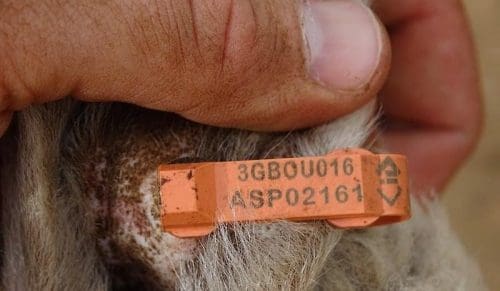 OPPONENTS of a national mandatory electronic identification system for sheep and goats are uniting in support of EID-tag free exemptions for all farmed stock sent direct to slaughter and upgrades to the current visual tag-based system.
OPPONENTS of a national mandatory electronic identification system for sheep and goats are uniting in support of EID-tag free exemptions for all farmed stock sent direct to slaughter and upgrades to the current visual tag-based system.
Pastoralists of Western Darling councillor Lachlan Gall has told Sheep Central that producers he has spoken to in four states shared PAWD concerns about the rollout of mandatory EID, and supported EID tag-free movement options in specific circumstances.
Western New South Wales producers at a Broken Hill information session had the proposed EID rules around goats clarified last week, including maintenance of the current tag exemption for harvested (wild capture) rangeland goats transported direct from property of capture direct to slaughter or via a registered depot.
Under the proposed NSW EID system, only sheep and any goats moved to saleyards, other producers or to show operators, and any goats that have been ear-marked, castrated, joined, vaccinated or drenched, would need an EID tag.
Mr Gall said a show of hands before and after the Broken Hill session showed no support among the estimated 80-plus western NSW pastoralists for the proposed mandatory roll-out of an EID system in the state, although there was some support for for a hybrid system that included greater electronic connectivity of NVDs and the NLIS database, and electronic tag-free movement options for lambs, sheep and farmed goats from property of birth direct to slaughter.
At the Broken Hill session, PAWD president Terry Smith queried how traceability is improved by tagging animals recorded on an NVD or eNVD that are moving from their property of birth direct to slaughter.
“The fundamental issue is that it’s not just about one movement, it’s about movement across the chain and lifetime traceability,” NSW Department of Primary Industries group director livestock systems Dougal Gordon said.
Secondly, he said in the future it would be in producers’ interests to put in EIDs to maximise market access.
Mr Gordon said direct to slaughter tag exemptions would set a precedent in Australia, with no such exemptions for cattle nationally, or for any stock in Victoria, which has had a mandated EID tag system for sheep, cattle and goats since 2017.
Mr Smith said there is also support for a direct-to-slaughter EID-tag exemption for sheep and goats in other states, while maintaining a visual tag requirement.
However, Mr Gordon said direct-to-slaughter EID tag exemptions would mean processors having to run two systems, that would be costly and could reduce farmgate livestock prices. He said this would also incentivize producers to sell direct-to-slaughter, potentially bankrupting saleyards.
“Now 50 percent of sheep in New South Wales are sold by saleyards, 50 percent, so is that in your best interests? I should think not.
“The other thing I would point is this is a national decision, direct-to-slaughter is a national decision, it’s not a New South Wales decision.”
Harvested rangeland goat EID exemption ‘put to bed’
Mr Gall told Sheep Central today he considered that uncertainty around the EID tag exemption for harvested rangeland goats had been “put to bed”. He supported stock movements being recorded on eNVDs and the use of livestock disease alerts or notifications via the mobile phones of carriers, stock agents or producers if an SMS alert system could be rolled out.
He said two priorities for PAWD now are the linking NVD stock transfers with the National Livestock Identification System database electronically “so everything gets updated in real time,” and EID tag-free options for all animals from property of birth to slaughter.
“It’s not there for cattle, but why not?
“Rubbish tag retention rates in old cows destined for slaughter is very frustrating.
The Broken Hill meeting was told of several cases where stock ID data – sheep and cattle — had not been transferred correctly to the NLIS database by processors.
Mr Gall said producers in South Australia, New South Wales, Queensland and Western Australia supported “a sensible approach” to implementing EID for sheep and goats. He said more policing of NVD transfers and uptake of eNVD transfers to the NLIS database before implementing a mandatory EID system would be an “ideal outcome.”
“I think policing of NVD uploads associated with the current system and some sort of compliance action to sort out the deficiencies, coupled with moving to eNVDs, would automatically put an end to the problems of (paper) NVDs not being uploaded.”
If this was done, it would potentially mean that a mandatory national EID tag-based system might not be needed, he said.

If Foot and Mouth Disease enters the country from the north it will spread like a grass fire on a windy day.
How do the powers to be expect to stop transmission from the wild pig population?
Mr Gordon is incorrect. RFID does not give market access. How can it? Traceability ends at the knocking box.